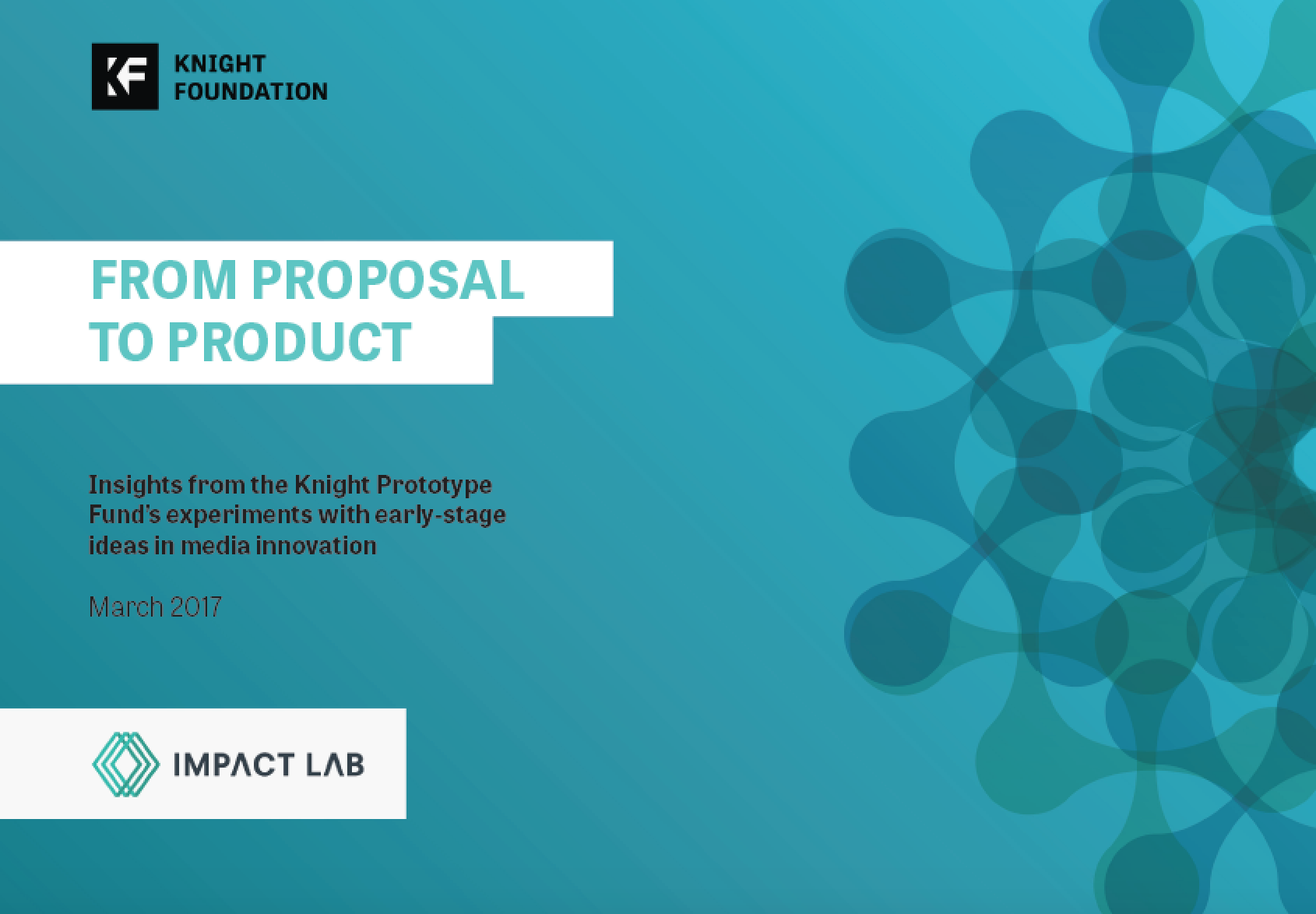Knight launched the Prototype Fund in 2012 to help innovators push media, journalism and civic information projects forward by giving them an avenue to build fast, fail forward and learn quickly. “From Proposal to Product” highlights insights from the early years of the Prototype Fund. We designed the program out of a belief that human-centered design along with an iterative approach to technology development produces better results. The process made room for mistakes, but also discoveries.
EXECUTIVE SUMMARY
The Knight Foundation Prototype Fund seeks to catalyze media innovation through small investments in early-stage projects. Though the funded projects vary greatly in terms of goals and types of organizations supported, each Prototype Fund grantee receives $35,000 to experiment over a six-month period with developing and piloting an innovative idea. Since launching in 2013, the Prototype Fund has invested nearly $9 million in 255 projects. The Prototype Fund acts as a philanthropic angel investor and seeks to spread the use of human-centered design among grantees.
Knight Foundation hired The Impact Lab in 2014 to support learning among Prototype Fund grantees. The Impact Lab has worked with grantees to define key learning questions, design data-collection approaches, and review findings and reflections at the end of the six-month grant periods. In fall 2015, The Impact Lab surveyed grantees who were least six months out of the program to understand how the projects had fared.
Key findings include:
• A new model for philanthropy.
The Prototype Fund has shown that a major foundation can act nimbly and invest in high-risk, early-stage ideas wherever they find them. The strength of the fund is in its ability to be nimble and support a wide range of experimentation across for-profit and nonprofit organizations.
• A few wins, broader struggles.
A handful of projects have gained traction since graduating from the fund, evidenced through product usage and additional investment. The majority of projects had not launched a live product or attracted users outside of private testing even six months after the demo day marking the conclusion of the grant period. This partly reflects the inherent riskiness of projects supported through the fund. It also reflects struggles with achieving a working prototype during the six-month window of the fund experience, and it suggests the potential for additional supports for projects.
• Design thinking training a success.
The vast majority of grantees recall the human-centered design training provided by design firm LUMA Institute as being the most valuable part of their Prototype Fund experience. Grantees discussed how it has influenced there work far beyond their Prototype Fund project.
• Clarity of Goals.
The absence of clear state vision for success with measurable outcomes undermined the fund’s efforts to support project alignment and learning. Defining success more intentionally may enable the fund to achieve greater impact and assemble a more coherent portfolio of projects aligned with achieving important outcomes.
Ultimately, the Knight Prototype Fund has demonstrated how a small investment along with nonmonetary supports, including design training, can advance successful projects and innovation. More strategic clarity and focus for the fund and the projects supported could greatly magnify the impact of the program.
